Today I want to share my guide to where to live in London for your style. People always ask me about the best areas to live in London, and now I want to answer that question. From pretty London neighborhoods to convenient central locations, up-and-coming parts of the city, and affordable areas, I’ll show you where to live based on your individual tastes, preferences, and circumstances. There’s a map, too.
Where to Live in London
One of the hardest parts about the question of where to live in London is that there’s no right answer. It all depends on your taste, personal style, budget, and commute (if you have one).
Where your friends live is also important, as London is vast and traveling from one part of the city to another can take a long time. One of the first pieces of advice I got when I moved to London was to choose an area close to people I knew.
With those things in mind, this post is designed to give you a range of ideas for the best places to live in London.
It also has links to my lists of north, south, east, west, and central London neighborhoods that can give you more ideas. Think of this post as the highlight reel and those posts as places where you can dig deeper.
After you’ve taken a look, you can decide which part of London is right for your personality, life, and circumstances. If you want to purchase a property, my guide to how to buy a flat in London can help with next steps.
Either way, I hope you find the perfect London neighborhood for you.
Where to Live in London: North
I’ll start my list with north London. There are a lot of areas to choose from here, whether you want to be more central or more remote, in a village-like area or an urban one.
If you already know you want to live in this part of the city, you can see my full list of places to live in my north London neighborhoods guide.
Hampstead
Since it was the first place I lived in London, I’ll start my list of where to live in London with Hampstead. This north London neighborhood is a true gem, and it’s still one of my favorite parts of the city.
Hampstead is known for its pretty streets, beautiful houses, hidden pubs, and the sprawling expanse of Hampstead Heath. They make it one of the most beautiful places to live in London.
Pros of living in Hampstead include the picturesque surroundings, green spaces, and tube station in the heart of the area.
Cons of living in Hampstead include the slightly longer commute into central London, high housing prices, and the lack of a large supermarket for grocery shopping (I ended up getting mine delivered most of the time).
Primrose Hill
Next on my list of where to live in London is Primrose Hill. This is one of the sweetest London neighborhoods, not least because of its pastel houses and pretty shops.
The high street is lovely to walk down, and the view from the top of Primrose Hill itself is stunning. The neighborhood has more than its fair share of good pubs, too.
Pros of living in Primrose Hill include the proximity to central London, the tube station, beautiful streets, great shops, and park.
The main con of living in Primrose Hill is the high housing prices compared to other parts of the city.
Highgate
My guide to where to live in London continues with Highgate. Home of the famous Highgate Cemetery and lots of village streets and squares, this is one of the most beautiful parts of north London.
I love walking through Highgate Wood, Waterlow Park, and Hampstead Heath, and I appreciate that the shops around the high street have cheerful facades. Holly Village is a true London gem, too.
Pros of living in Highgate include the tube station, beautiful houses, good views, and green spaces.
Cons of living in Highgate include high housing prices and a slightly longer commute into central London.
Belsize Park
Belsize Park is where to live in London if you want a slightly more affordable area than Hampstead and you enjoy pretty side streets.
Sandwiched between Hampstead and Primrose Hill, this part of the UK capital is home to a high street with everything from independent restaurants to a branch of London’s beloved Daunt Books.
Belsize Lane also has a cluster of colorful shops and cafes, and there are great mews around it.
Pros of living in Belsize Park include the tube station, beautiful houses, proximity to Hampstead village, Hampsted Heath, and Primrose Hill, and slightly less expensive housing prices than Hampstead (this last point is true of nearby South End Green, too).
Cons of living in Belsize Park include the fact that housing prices are still high and you have a slightly longer commute into the heart of the city than you would if you lived more centrally.
Camden
On the southern border of Primrose Hill, Camden is another of the best north London neighborhoods to live in. This area is right on Regent’s Canal, and it’s home to Camden Market.
The neighborhood is also known for its great pubs and nightlife scene. Streets like Parkway are bursting with restaurants and cafes, and Camden High Street retains some of the colorful facades and goth clothing shops the area was once known for.
Pros of living in Camden include the tube station, proximity to central London and Regent’s Park, nightlife scene, and canal.
Cons of living in Camden include relatively high housing prices and heavy crowds at the market on weekends.
West Hampstead
Next on my list of where to live in London is West Hampstead. This area features a mix of pretty residential streets and a lively high street.
West End Lane has everything from bookshops to bakeries, and the neighborhood has some of the best transport links to London airports and international train stations of any in the city.
Pros of living in West Hampstead include the tube, Overground, and train stations, pretty side streets, lively high street, and international travel connections.
Cons of living in West Hampstead include relatively high housing prices for a non-central location and less to do than some other London neighborhoods.
Hampstead Garden Suburb
North of Hampstead, Hampstead Garden Suburb is next on my list of where to live in London. This area is a unique example of a planned community featuring early 20th-century domestic architecture.
Hampstead Garden Suburb has lots of brick houses and manicured gardens, and it’s a great place to get away from the bustle of the city and see somewhere different.
Pros of living in Hampstead Garden Suburb include the quiet residential atmosphere, pretty side streets, and proximity to Hampstead Heath.
Cons of living in Hampstead Garden Suburb include the relatively high housing prices, lack of restaurants and shops, distinctly suburban feel (if you don’t like that kind of thing), and distance from public transport links (although Golders Green tube station isn’t far).
Crouch End
Next on my list of where to live in London is Crouch End. This area has a truly local feel, and the shops, restaurants, and pubs around the Crouch End Clock Tower offer a fun mix of independent finds.
There are bookshops and design-led stores galore, and given the area’s elevation, some of the side streets have great views over London.
Pros of living in Crouch End include the great shopping streets, views, and local feel.
Cons of living in Crouch End include the lack of transport links in the heart of the area (although there are train and Overground stations nearby) and slightly farther distance from central London.
St John’s Wood
Next on my guide to where to live in London is St John’s Wood. This area is famous for Lord’s Cricket Ground and The Beatles’ Abbey Road Studios (and the famous zebra crossing). US expat families like it because of the American School in London, too.
St John’s Wood High Street has lots of shops and cafes along it, and Saint John’s Wood Church Gardens are peaceful for walks. The area is right by Regent’s Park, too.
Pros of living in St John’s Wood include the high street, tube station, and proximity to central London.
Cons of living in St John’s Wood include the relatively high cost of housing and slightly smaller high street than some other areas.
Maida Vale and Little Venice
Next on my guide to where to live in London are Maida Vale and Little Venice. This combined area is famous for its canals, but there are pretty streets and houses galore, too.
Maida Vale and Little Venice are great places to live if you love Canal walks in London and living on the water. They’re residential, so they offer a nice break from the bustle of the city center without being too far from it.
Pros of living in Maida Vale and Little Venice include the canals, tube stations, local shops and restaurants, and proximity to central London.
Cons of living in Maida Vale and Little Venice include the relatively high cost of housing and lack of a single high street.
Islington
Islington is next on my list of where to live in London. Along with Angel, this area is one of the best London neighborhoods for its long high street, colorful side streets, and vibrant atmosphere.
Upper Street is lined with shops, restaurants, bars, and cafes, and there’s always something to catch the eye in Camden Passage. Leafy squares abound, there are colorful doors everywhere.
Pros of living in Islington include the shops and restaurants on Upper Street, Camden Passage, the tube, train, and Overground stations, and proximity to central London.
The main con of living in Islington is the relatively high cost of housing in the area.
Highbury
Next on my list of where to live in London is Highbury. This area is just north of Islington and it’s home to the expansive Highbury Fields.
The area also has a great high street with lots of independent shops and restaurants, and pretty side streets packed with eye-catching houses.
Pros of living in Highbury include slightly lower housing costs than Islington, the high street, and good transport links.
The main con of living in Highbury is a slightly farther commute into central London than from some other places.
Canonbury
Next on my guide to where to live in London is Canonbury. This area is just east of Islington and it’s home to picture-pretty houses, tucked-away pubs, cafes, and a long, skinny park with a river running through it.
Canonbury also has museums, leafy squares, and gorgeous streets. It benefits from its proximity to Upper Street, too.
Pros of living in Canonbury include its residential feel, good location near central London and Islington, and good transport links.
The main con of living in Canonbury is a relatively high cost of housing.
Barnsbury
Next on my guide to where to live in London is Barnsbury. This area is between Islington and King’s Cross, and it’s home to elegant houses, local pubs and restaurants, and Barnard Park. Caledonian Road has some good cafes, too.
Barnsbury also has pretty squares, colorful doors, and a residential feel. It benefits from its location on Regent’s Canal and its proximity to Upper Street and Granary Square, too.
Pros of living in Barnsbury include a residential atmosphere, good location near the city center, and transport links.
The main con of living in Barnsbury is that its high street isn’t quite as exciting as others in the area (although Upper Street is nearby).
Muswell Hill
Next on my guide to where to live in London is Muswell Hill. This area is home to Alexandra Palace, Alexandra Park, and some of the best views of London.
Muswell Hill has a distinctly local feel. The area is known for its independent shops on Muswell Hill Broadway and its unique Parkland Walk, which runs along an old railway line and has lots of natural beauty and viewpoints.
Pros of living in Muswell Hill include the shops, restaurants, park, streets, and views.
Cons of living in Muswell Hill are the distance from central London and the lack of transport links (although there’s a train station at the east end of Alexandra Park and the tube stations in Highgate and East Finchley aren’t miles away).
Kentish Town
Next on my list of where to live in London is Kentish Town. This area is right next to Hampstead Heath and it’s known for its colorful houses and good cafes and bars.
Kentish Town has a great local feel to it, and its proximity to Highgate and the heath make it an ideal place to live in north London.
Pros of living in Kentish Town include lower housing costs than Highgate and Hampstead, a lively high street, and great transport links.
The main con of living in Kentish Town is a slightly farther commute into central London than from some other places.
Where to Live in London: West
Moving on from north London, I’ll cover west next. This part of the city is home to popular neighborhoods, and beautiful ones at that.
If you know you want to live in this part of the city, you can take a look at my west London areas list to see more of the best places to live in London for you.
South Kensington
If you’re wondering where to live in London’s western areas, South Kensington is a good place to start. When I first told people back in California I was moving to London, everyone said “you’re going to live in South Ken, right?” As if it were a given.
That’s primarily because South Kensington is popular with American expats (and French ones thanks to the lycee). It’s a good place to live if you’re coming from the States (or France) and want to be near other people who are as well.
Beyond that, South Kensington is full of pretty mews, world-class museums, great restaurants, and independent shops.
Pros of living in South Kensington include the relatively central location, beautiful streets, multiple tube lines and stations throughout the neighborhood, and cultural attractions.
Cons of living in South Kensington include high housing prices and big tourist crowds in the warmer months.
Kensington
With its plethora of mews and royal residence, Kensington is one of London’s most elegant areas. I lived here for years and loved it.
It’s known for the stunning houses along Kensington Palace Gardens (not to mention Kensington Gardens themselves), shops on Kensington Church Street and Kensington High Street, and beautiful side streets and squares.
Pros of living in Kensington include the relatively central location, pretty streets, multiple tube lines and stations throughout the area, and big park.
Cons of living in Kensington include high housing prices and the fact that the District and Circle lines of the tube never seem to be working.
Chelsea
Next on my list of where to live in London is Chelsea. This upscale area on the Thames is known for its great shopping, hidden gardens, and pastel houses.
I love the King’s Road for its shops, restaurants, and market, and the embankment for its historic homes and river views.
Pros of living in Chelsea include the relatively central location, pretty side streets, tube station, Overground station, riverboat pier, and shops.
Cons of living in Chelsea include high housing prices and the fact that certain parts of the neighborhood are farther from the tube and Overground than some people would like.
Notting Hill
No list of where to live in London would be complete without Notting Hill. This area is famous for its colorful houses and vibrant market on Portobello Road.
Notting Hill also has pretty mews and great shops, restaurants, pubs, and bars that draw people from all over London. The famous film locations are a bonus, too.
Pros of living in Notting Hill include the relatively central location, colorful streets, good tube links, market, shops, and restaurants.
Cons of living in Notting Hill include high housing prices and the fact that the area gets very crowded (especially on Saturdays when the market is in full-swing).
Ladbroke Grove
Next on my list of where to live in London is Ladbroke Grove (or North Kensington). This area lies just north of Notting Hill, but it manages to fly under the radar. As a result, there’s a great local atmosphere here.
Ladbroke Grove is famous for the shops, restaurants, and market along Golborne Road. There are also pretty mews, parks, and colorful doors dotted throughout the area.
Pros of living in Ladbroke Grove include the shops, restaurants, streets, market, tube station, and proximity to Notting Hill.
Cons of living in Ladbroke Grove include relatively high housing prices compared to places further afield, and the Trellick Tower, which some people consider the ugliest building in London.
Holland Park
Adjacent to Notting Hill, Holland Park is another of the best places to live in London.
The park itself is beautiful, and streets like Holland Park Mews are stunning. Cultural attractions like the Design Museum and Leighton House Museum are bonuses, and the high street has a range of shops and restaurants.
Pros of living in Holland Park include the elegant streets and crescents, tube station, park, and cultural attractions.
Cons of living in Holland Park include high housing prices and a smaller high street than some other parts of the city.
Earls Court
Right by South Kensington, Earls Court is next on my guide to where to live in London. It’s home to side streets full of pastel houses, pretty crescents, and historic details.
The high street has lots of restaurants and bars, and The Troubadour on Old Brompton Road is an institution.
Pros of living in Earls Court include the relatively central location, slightly lower housing prices than other places nearby, and a tube station with good links to other parts of London.
The main con of living in Earls Court is the less exciting high street than some other places in the UK capital.
Fulham
Next on my list of where to live in London is Fulham. From Parson’s Green with The White Horse pub (Sloaney Pony if you’re a Londoner), to Fulham Palace, this west London neighborhood has a lot going for it.
There’s great shopping and entertainment on Fulham Road, and New King’s Road is packed with restaurants and cafes. The Harwood Arms pub is a great place to eat, and the Hurlingham Club is one of the best places on the Thames in London.
Pros of living in Fulham include transport links to other parts of London, great high streets, good nightlife, and proximity to the river.
Cons of living in Fulham are the relatively high cost of living and slightly farther distance from central London.
Chiswick
For something more local, Chiswick is another place that’s worthy of a spot on my list of where to live in London. This residential area is packed with beautiful streets and historic houses.
The high street in Chiswick has great restaurants and shops, and I love spending afternoons taking in the stunning houses and gardens along the Thames Path.
Add to that Chiswick House, Hogarth’s House, and the Fuller’s Brewery, and there are a lot of unique attractions here, too.
Pros of living in Chiswick include multiple tube stations, the Thames, cultural attractions, pretty side streets, the high street, and the relative proximity to Heathrow.
Cons of living in Chiswick include higher housing prices than other areas of the city and a slightly longer commute into central London.
Shepherd’s Bush
Next on my list of where to live in London is Shepherd’s Bush. This is a popular area to live in because it’s more affordable than some other parts of west London and it has good transport links into the city center.
With a big shopping mall, a Soho House called White City House, and a thriving restaurant and bar scene, this is a great west London neighborhood to call home.
Pros of living in Shepherd’s Bush include good transport links, shops, and lower housing prices than areas just to the east of it.
Cons of living in Shepherd’s Bush include busy roads and a shopping mall with mostly high street shops (if you don’t like that kind of thing).
Where to Live in London: Central
I’ll continue my guide to where to live in London with the city center. The areas here are popular with people who are living in London for a short time or would like to be in the heart of the UK capital.
If you know you want to live in this part of the city, you can take a look at my central London neighborhoods list to see more of the top places to live in London for you.
Belgravia
Belgravia is one of the most elegant parts of London. Packed with embassies and ambassadors’ residences, this London neighborhood is deserving of its location next to Buckingham Palace.
Belgravia also has a lot of beautiful mews, pretty squares, local pubs, and colorful shopping streets. The floral facades on Elizabeth Street are famous.
Pros of living in Belgravia include the central London location, picture-pretty streets and shops, and proximity to transport hubs like Victoria station.
The main con of living in Belgravia is the sky-high housing prices.
Knightsbridge
Next on my list of where to live in London is Knightsbridge. Bordering Belgravia, it’s known as much for its luxury shopping as it is for its eye-catching brick architecture.
Knightsbridge is one of the most expensive London neighborhoods to live in, and it has the looks to match. From Harrods food halls to the orange brick buildings on Pont Street and pretty homes in Trevor Square, it’s a feast for the eyes.
Pros of living in Knightsbridge include the central London location, picture-pretty streets and shops, famous department stores like Harvey Nichols, and tube station.
Cons of living in Knightsbridge are the extremely high housing prices and crowds at the departments stores in the high season.
Mayfair
Next on my guide to where to live in London is Mayfair. This luxurious area is full of beauty, from the shops on Bond Street to the gardens behind Mount Street and the hotels on Park Lane.
Side streets feature houses dripping with flowers, famous pubs like The Coach and Horses, and pretty mews with restaurants and cafes. This is one of the best places to live in London all around.
Pros of living in Mayfair include the central location, stunning streets and shops, transport links, and prestigious postcode.
Cons of living in Mayfair are the eye-wateringly high housing prices and crowds on the larger streets in the high season.
Marylebone
Just north of Mayfair, Marylebone is next on my list of where to live in London. The restaurants and shops on Marylebone High Street alone could keep me busy all day.
Chiltern Street is full of heritage buildings, and Marylebone Lane and St Christopher’s Place are packed with gems.
Add to that museums like the Wallace Collection, great weekly markets, pretty side streets, and proximity to Regent’s Park, and Marylebone is hard to beat.
Pros of living in Marylebone include the central location, vibrant markets and shops, and good transport links.
Cons of living in Marylebone are high housing prices and crowds on the larger streets and in the stations in high season.
Clerkenwell
Next on my list of where to live in London is Clerkenwell. This area is home to historic streets with great shops and restaurants, leafy squares, and fun markets.
Clerkenwell is known for everything from the food on Exmouth Market to the shops on Amwell Street. Its side streets are full of pretty houses, too.
Pros of living in Clerkenwell include the central location, markets, streets, and good transport links.
The main con of living in Clerkenwell is the high central London housing prices.
Bloomsbury
Next on my list of where to live in London is Bloomsbury. This area is home to peaceful squares, literary history, world-class museums, and great cafes and restaurants.
Bloomsbury is known for everything from the British Museum to Russell Square. It has fun streets like Lamb’s Conduit Street and Store Street, too. Both have great food-and-drink scenes.
Pros of living in Bloomsbury include the central location, abundance of squares and shops, good transport links, and museums.
The main con of living in Bloomsbury is the high central London housing prices.
Fitzrovia
Next on my guide to where to live in London comes Fitzrovia. This busy area is home to lots of shops, restaurants, cafes, and bars.
Fitzrovia is home to great restaurants on and around Charlotte Street, pretty mews, hidden alleys, and historic architecture.
Pros of living in Fitzrovia include the central location, restaurants, good transport links, and streets.
Cons of living in Fitzrovia include the high central London housing prices and the fact that some things are closed on weekends.
King’s Cross
Next on my guide to where to live in London is King’s Cross. This area is famous for its train stations, but it’s also worth considering for its great shopping, restaurants, and canalside charm.
King’s Cross is known for the restaurants and markets in Granary Square, shops in Coal Drops Yard, and colorful boats on Regent’s Canal.
Pros of living in King’s Cross include the canal, train and tube stations, independent shops and restaurants, and central London location.
The main con of living in King’s Cross is the relatively high cost of housing.
Westminster
Next on my list of where to live in London comes Westminster. In this area lies the heart of London’s government, and it’s known for its stunning architecture and landmark buildings.
From the Houses of Parliament to Westminster Abbey and Big Ben, this part of the city is rife with icons. Its riverside location and central setting make it an ideal place to live, too.
Pros of living in Westminster include the central location, attractions, transport links, and pretty side streets.
Cons of living in Westminster are the high central London housing prices and the tourist crowds in the high season.
Pimlico
Next on my list of where to live in London comes Pimlico. This part of central London flies under the radar, but it’s worth considering for its great location.
Pimlico is right on the Thames and it offers a number of streets with good local restaurants and cafes. It also has a residential feel, which is rare in central London. There are some pretty mews in the area as well.
Pros of living in Pimlico include the central location, tube station, slightly lower housing prices than some other parts of central London, the Thames, and the cafes.
The main con of living in Pimlico is the lack attractions given its central location (but the surrounding areas more than make up for it).
City of London
Next on my list of where to live in London comes the City of London. The historic heart of the UK capital, this area is home to London landmarks like St Paul’s Cathedral, The Monument, and The Gherkin. There’s even a stretch of ancient Roman wall here.
The City of London is packed with pubs, bars, and restaurants, and there are lots of historic side streets to get lost in.
Pros of living in the City of London include the central location, great transport links, and history.
The cons of living in the City of London are the high housing prices and the fact that a lot of things are closed on weekends because it’s not as much of a residential area as other places.
St Katharine Docks
On the more underrated end of the central London living spectrum, St Katharine Docks sits beside Tower Bridge and the Tower of London, but often gets overlooked.
It’s a great place to live in London because it’s so unique. The boats, for one thing. The maritime vibe is a welcome change from other parts of the UK capital, and the marina always makes me feel like I’m by the sea.
Pros of living in St Katharine Docks include the central location, water, markets, pubs, and proximity to local tube and DLR stations.
Cons of living in St Katharine Docks are high housing prices, a limited housing stock, and crowds from Tower Bridge and the Tower of London spilling into the area’s restaurants and cafes in the high season.
Where to Live in London: East
My guide to where to live in London continues in the east. This part of the city is known for its hipster vibe and creative scene, so it’s great if you want to be in the thick of all things new and exciting.
If you know you want to live in this part of the city, my east London neighborhoods guide has even more places for you to look at.
Shoreditch
Shoreditch is another of the best areas to live in London. This part of east London is edgy without being too edgy, and central without being too central.
It’s a great balance if you want to be near the hip, creative parts of London without living in an area that’s still up-and-coming.
There’s a popular nightlife scene here, and street art galore. Roads like Redchurch Street are packed with fun shops and restaurants, and Shoreditch is near popular streets like Brick Lane.
Pros of living in Shoreditch include the relatively central location, nightlife, tube and Overground stations throughout the neighborhood, and good balance of hipster and mainstream atmosphere.
Cons of living in Shoreditch include ever-increasing housing prices and noise at night if you live on streets with bars and restaurants.
Spitalfields
Next on my list of where to live in London is Spitalfields. From Old Spitalfields Market to the street art around Brick Lane, this area is one of the most exciting in east London.
Spitalfields also has great side streets to explore. Puma Court and Princelet Street are two of the best. The 18th-century Huguenot silk weavers’ houses on the latter are picture-pretty.
Pros of living in Spitalfields include the relatively central location, tube, train, and Overground stations around the neighborhood, and good restaurants, nightlife, and atmosphere.
Cons of living in Spitalfields include crowds at the markets on weekends and noise at night if you live on streets with bars and restaurants.
Walthamstow
Walthamstow comes next on my guide to where to live in London. This area in the northeast of the city is home to a famous neon art cafe, the William Morris Gallery, and a mix of heritage buildings and contemporary shops and workshops.
Walthamstow is also home to parks and wetlands, and it’s near Epping Forest. They’re perfect places to get outdoors.
Pros of living in Walthamstow include relatively low housing prices compared to other parts of the city, tube and Overground stations, and good residential atmosphere.
The main con of living in Walthamstow is the slightly farther distance from central London. But the fact that it’s on the quicker-than-most Victoria line of the tube partially makes up for that.
Tottenham
Next on my list of where to live in London is Tottenham. This up-and-coming area in the northeast of the UK capital is home to all things new and hip.
The high street and surrounding areas are home to cool cafes and bars, and the River Lea and Tottenham Marshes add a dose of nature to the neighborhood.
Pros of living in Tottenham include affordable housing prices, train and Overground stations, and new things opening all the time.
Cons of living in Tottenham are the commute into central London and lack of a tube station.
Stoke Newington
Next on my list of where to live in London is Stoke Newington. This is a local area with a variety of good independent restaurants, cafes, and shops.
The area is also home to Clissold Park and Abney Park, two great green spaces. Walking through them is one of many exciting things to do in Stoke Newington.
Pros of living in Stoke Newington include the great restaurants, parks, and high streets, and an Overground station.
Cons of living in Stoke Newington include the slightly farther distance from central London and that it’s not on the tube.
Canary Wharf
Next on my list of where to live in London is Canary Wharf. Famous for its skyscrapers, this area is a financial hub.
But it’s not all banking here. Canary Wharf is home to Billingsgate Market, the Museum of London Docklands, and The Gun, one of the most historic riverside pubs in London.
Pros of living in Canary Wharf include the easy commute if you work in the area and the good transport links on the tube, DLR, and riverboats.
Cons of living in Canary Wharf include the slightly farther distance from central London and the relative lack of old-world charm many people like about calling the UK capital home.
Hackney Wick
Hackney Wick is next on my guide to where to live in London. One of London’s trendiest areas, it’s known for its nightlife scene and hip vibe. This place is particularly popular with 20-somethings and young professionals.
It’s also surrounded by big green spaces like Victoria Park and Queen Elizabeth Olympic Park, so there are plenty of places to get into nature.
Sitting along the Lee Navigation canal, Hackney Wick is full of artists’ studios in converted industrial spaces, cool cafes, and independent breweries. It’s the perfect place to play hipster.
Pros of living in Hackney Wick include the slightly lower cost of housing than some other parts of London, nightlife, young atmosphere, parks, Overground station, and creative scene.
Cons of living in Hackney Wick include the slightly farther distance from central London and noise at night if you live by one of the nightlife venues.
Hackney
Next on my guide to where to live in London is Hackney. This huge area in east London is home to everything from London Fields park to Chatsworth Road Market, Broadway Market, and the famous Columbia Road Flower Market.
Hackney also features hip bars under railway arches, great nightlife, delicious bakeries, inventive restaurants, coffee shops, and the sprawling expanse of Victoria Park. It’s one of the coolest places to live in London.
Pros of living in Hackney include the nightlife, markets, hip atmosphere, canal, parks, train and Overground stations, and endless new openings.
Cons of living in Hackney include the slightly farther distance from central London and lack of a tube station.
Bethnal Green
Bethnal Green comes next on my list of where to live in London. This is a popular east London neighborhood to live in, and it’s home to everything from the Young V&A to Bethnal Green Gardens.
The area offers everything from culture to trendy East End restaurants and bars. There are lots of places to eat and drink here, and the railway arches on Paradise Row are full of hip spots.
Pros of living in Bethnal Green include slightly lower housing prices than other parts of London, the tube station, and proximity to Victoria Park and Mile End Park.
Cons of living in Bethnal Green include the fact that there aren’t quite as many exciting places in the area as there are in neighboring parts of east London like Hackney and Shoreditch.
Wapping
Next on my guide to where to live in London is Wapping. This area is right next to Tower Hill, Spitalfields, and Whitechapel, but it keeps a low profile.
Wapping is known for its historic riverside pubs, the Ornamental Canal, Wilton’s Music Hall, and the great independent cafes that have popped up around the converted former dock warehouses in the area.
Pros of living in Wapping include the canal, river, Overground station, independent shops and restaurants, and relatively central location.
The main con of living in Wapping is the lack of a tube station (but there are some nearby).
Where to Live in London: South
My guide to where to live in London continues in the south. The area south of the Thames has changed dramatically over the years, and it’s home to some of the most popular places to live in the city.
Housing costs tend to be lower here than in areas north of the river, too. If you know you want to live here, my south London guide will show you more places to consider.
Dulwich
I’ll start with Dulwich. This leafy village is one of the prettiest London neighborhoods to live in, and there are a lot of great things to do in Dulwich.
With a renowned picture gallery, a high street full of cafes, beautiful parks, and unique wooden street signs with fingers pointing in every direction, there’s a lot to love about Dulwich. Families like it because of the good schools in the area, too.
Pros of living in Dulwich include the beautiful village atmosphere, green spaces like Dulwich Park and Dulwich Wood, and the world-class museum.
Cons of living in Dulwich include higher housing prices than most parts of south London, the lack of a tube or Overground station (it’s served by trains, though), and the distance from central London.
East Dulwich
Next on my list of where to live in London is East Dulwich. Right next to Dulwich village, it’s known for its great high street, vibrant North Cross Road market, street art, and pretty parks and squares.
From the independent shops on Lordship Lane to the adorable dogs on Goose Green and abundance of good local pubs, East Dulwich has a lot going for it.
Pros of living in East Dulwich include the slightly lower housing costs than Dulwich village, local train station, proximity to the Overground stations in Denmark Hill and Peckham, and high street.
Cons of living in East Dulwich include the lack of a tube station and distance from central London.
Greenwich
Next on my list of where to live in London is Greenwich. This area is known for its historic architecture, world-class museums, park, observatory, and maritime history.
From the Queen’s House to the Old Royal Naval College, Greenwich Park, and the Royal Observatory, Greenwich has heritage galore. Add to that pretty streets and a vibrant market, and it’s a great place to live in southeast London.
Pros of living in Greenwich include slightly lower housing costs than other parts of London, local train and DLR stations, pretty streets, a riverfront location, green spaces, and historic roots.
Cons of living in Greenwich include the lack of a tube station and commute into central London.
Deptford
Next on my list of where to live in London is Deptford. This up-and-coming area is known for its cool coffee shops, great market, and independent stores.
Located right next to Greenwich on the Thames, it’s a great area if you like all things new and hip. From pubs to pop-ups and railway arches packed with restaurants, it has it all.
Pros of living in Deptford include relatively low housing costs, local train and DLR stations, a riverfront location, hip shops and nightlife venues, and the proximity to Greenwich.
Cons of living in Deptford include the lack of a tube station and longer commute into central London.
Brixton
Next on my list of where to live in London is Brixton. This multicultural area is known for vibrant markets like Pop Brixton, Brixton Village, and Brixton Market. It has a great nightlife scene, too.
There are lots of lively pubs, bars, and restaurants in Brixton, and the abundance of street art means there’s always something new to see.
Pros of living in Brixton include marginally lower housing costs than in central London, local train and tube stations, and good places to go out.
Cons of living in Brixton include a slightly longer commute into central London and crowds at the markets on weekends.
Brockley
If you want to know where to live in London when it comes to underrated areas, Brockley is for you. This south London neighborhood has lots of street art, views across the city, and independent shops and restaurants.
Brockley is home to great parks and green spaces like Brockley & Ladywell Cemetery and Hilly Fields. It also has a famous market and pretty residential streets.
Pros of living in Brockley include slightly lower housing costs than other parts of London, a train and Overground station in the heart of the area, the market, independent shops, and parks.
Cons of living in Brockley include a slightly longer commute into central London and the lack of a tube station.
Camberwell
Next on my list of where to live in London is Camberwell. This neighborhood is home to art galleries, green spaces, and independent cafes.
There are parks galore, from Camberwell Green to Brunswick Park and Burgess Park. Denmark Hill is home to some of the prettiest residential streets in south London, too.
Pros of living in Camberwell include slightly lower housing costs than in central London, a train and Overground station in Denmark Hill, and an artistic vibe.
Cons of living in Camberwell include a slightly longer distance into central London and the lack of a tube station.
Forest Hill
Forest Hill is next on my list of where to live in London. Known for the Horniman Museum and its quirky stuffed walrus (not to mention its Sunday market), it’s a great local area in the south of the city.
Beyond that, Forest Hill has fun cafes and pretty gardens. Given it’s on a hill, there are great views of the city center from many of its parks and streets, too.
Pros of living in Forest Hill include lower housing costs than other parts of London, a train and Overground station, the museum and market, and the high street.
Cons of living in Forest Hill include a longer distance into central London and the lack of a tube station.
Herne Hill
Herne Hill comes next on my list of where to live in London. This area is known for Herne Hill Market and Brockwell Park.
There are some great pubs and restaurants in the neighborhood, too. Herne Hill is one of the best places to live in London if you want to experience a local neighborhood and see views of the city’s skyscrapers.
Pros of living in Herne Hill include lower housing costs than some other parts of London, a train station in the heart of the area, the market, and the park.
Cons of living in Herne Hill include a longer distance into central London and the lack of a tube or Overground station.
London Bridge and Bermondsey
Next on my list of where to live in London is London Bridge and Bermondsey. Right on the Thames, this area has great restaurants and nightlife.
The neighborhood is ideal if you want to stay close to north London but still get a feel for the south. It’s home to places like City Hall, Bermondsey Street, Maltby Street Market, and more.
Pros of living in London Bridge and Bermondsey include good tube and train connections, markets, shops, and the central location.
Cons of living in London Bridge and Bermondsey include the crowds on busy days and at peak commuting times, and the relatively high cost of living compared to other parts of south London.
Peckham
Peckham is next on my list of where to live in London. One of the city’s hipster meccas, it’s known for its nightlife, including rooftop bars with views of the city skyline.
Peckham is also home to great green spaces like Peckham Rye Park, good shops and restaurants on Bellenden Road, and creative spaces in the Bussey Building.
Pros of living in Peckham include good Overground and train connections, the creative scene, bars, and nightlife.
Cons of living in Peckham include the slightly higher cost of housing compared to other parts of south London, the lack of a tube station, and the distance from central London.
Nunhead
Just south of Peckham, under-the-radar Nunhead is another of the best areas to live in London. Home to an otherworldly cemetery-turned-park, cool bars, and local shops, it’s for you if you want to live like a local and explore unique sites.
Nunhead is close to the best of Peckham, Peckham Rye Park, and East Dulwich, but housing here tends to be less expensive and the area has a real neighborhood feel to it.
Pros of living in Nunhead include lower housing prices than in the surrounding areas, a train station in the heart of the neighborhood, independent shops, and a tight-knit community.
Cons of living in Nunhead include the lack of a tube or Overground station and the relatively long commute into central London.
Rotherhithe
Back up on the Thames, I’ll continue my list of where to live in London with Rotherhithe. This area is steeped in history. It’s known for being the site where the Mayflower ship departed London for America in 1620.
Rotherhithe is also home to great riverside scenery, historic pubs like The Mayflower, small museums, and pretty streets and parks.
Pros of living in Rotherhithe include a rail station in the heart of the area, pubs, green spaces, history, and the Thames.
The main con of living in Rotherhithe is the lack of a high street with lots of shops and restaurants.
Vauxhall
Next on my list of where to live in London is Vauxhall. This fast-transforming London neighborhood has unique cafes and nightlife, a hidden lavender garden, riverside walks, and peaceful green spaces.
Vauxhall Park and Vauxhall Pleasure Gardens are great places to soak up the sun on warm days, and secret spots like Bonnington Square Pleasure Garden are fun to discover.
Pros of living in Vauxhall include the central location, a tube and train station in the heart of the area, the Thames, the parks, and the cafes and nightlife.
Cons of living in Vauxhall are the lack of a high street with lots of shops and restaurants, and the construction.
Wimbledon
Wimbledon is next on my list of where to live in London. Best known for the Wimbledon Tennis Championships, the village is worth considering as a place to settle down.
Wimbledon village has a good high street with pubs and shops, and Wimbledon Common is a huge green space that’s great for getting into nature in the city.
Pros of living in Wimbledon include tube, tram, and train stations in the heart of the area, the green spaces, and the village feel.
Cons of living in Wimbledon include the relatively high housing prices and the commute into central London.
Clapham
Next on my guide to where to live in London is Clapham. With its pretty old town, expansive common, and excellent transport links, it’s no wonder so many people like to call this part of south London home.
Clapham Old Town is full of pretty streets and houses, and Abbeville Village is charming. Clapham Common is a great place to walk, and the area’s bars and pubs are lively every night.
Pros of living in Clapham include great tube, Overground, and train connections, the common, and the nightlife.
Cons of living in Clapham include the busy commute into central London and that some people see the nightlife scene as a bit rowdy.
Putney
Next on my guide to where to live in London is Putney. Right on the Thames, this area is known for its rowing, pubs, and bustling streets full of shops and restaurants.
Putney is full of riverside scenery and big green spaces like Putney Heath. It’s also a great place to watch the annual Boat Race between Oxford and Cambridge universities.
Pros of living in Putney include tube and train stations, parks, the Thames, and the rowing.
Cons of living in Putney include higher housing prices than some other parts of London and the slightly farther distance from the city center than areas like Fulham.
Battersea
Next on my guide to where to live in London is Battersea. This area is right on the Thames and has become an increasingly popular place to move over the years.
Battersea is known for its riverside walking paths, the huge expanse of Battersea Park, Battersea Power Station, and pretty pockets like Battersea Square. The US Embassy is located in Nine Elms, so the area draws American expats as well.
Pros of living in Battersea include the riverside location, Overground, tube, train, and riverboat transport links, shops and restaurants, and central location.
The main con of living in Battersea is the construction, which never seems to end.
Wandsworth
Next on my list of where to live in London is Wandsworth. This area starts on the Thames and extends pretty far south from there. It’s home to lots of parks, local pubs, and pretty streets.
Wandsworth is a popular residential area in London, not least because of its great local restaurants and shops, and its proximity to central London.
Pros of living in Wandsworth include the riverside location, train links, shops and restaurants, and green spaces.
Cons of living in Wandsworth are the lack of a tube station and slightly farther commute to central London compared to places like Battersea.
Richmond
My guide to where to live in London continues with Richmond. Out in the southwest, this affluent area is known for its pretty riverfront, stunning park, bustling high street, and lovely side streets.
Stately homes like Ham House add a nice cultural element to the area, and little alleys like Brewers Lane are charming. Richmond Green has great pubs and is a fun place to catch a glimpse of a local cricket match, too.
Pros of living in Richmond include the train and tube station, pretty streets, Thames Path, green spaces, and residential feel.
Cons of living in Richmond include relatively high housing prices and a longer commute into central London.
Crystal Palace
Next on my list of where to live in London is Crystal Palace. Way down south, this area is famous for its dinosaur sculpture-filled park, views of London, triangle of high streets, and residential feel.
A lot of people move to this area and neighboring Sydenham because housing costs are significantly lower than in other parts of London. Crystal Palace also has a good neighborhood feel to it.
Pros of living in Crystal Palace include lower housing prices than in other places in the city, train and Overground stations, good shops and restaurants, and Crystal Palace Park.
The main con of living in Crystal Palace is the long commute into central London.
Balham and Tooting
Next on my list of where to live in London are Balham and Tooting. South of Clapham, these London neighborhoods are known for their residential atmosphere, bustling high streets, good nightlife, and green spaces.
Balham and Tooting benefit from big parks like Tooting Bec Common. They’re popular with working professionals and 30-somethings who want to live on a tube line and buy London property, but don’t want to pay Zone 1 prices.
Pros of living in Balham and Tooting include the lower housing prices than in central London, train and tube stations, shops, restaurants, and parks.
The main con of living in Balham and Tooting is the somewhat longer commute into central London.
Where to Live in London
I hope you’ve enjoyed this overview of where to live in London and that it’s inspired you find the right fit for your style and circumstances. If you want to see everything in one place, my map of London neighborhoods can help.
If you need more inspiration, my self-guided London walking tours will take you through many of the areas on the list.
They’ll show you the high streets, side streets, and hidden corners, and they’ll help you get to know these London neighborhoods better. Good luck!
Find this post helpful? Buy me a coffee!
New here? Join thousands of others and subscribe to the A Lady in London blog via email.
Pin it!

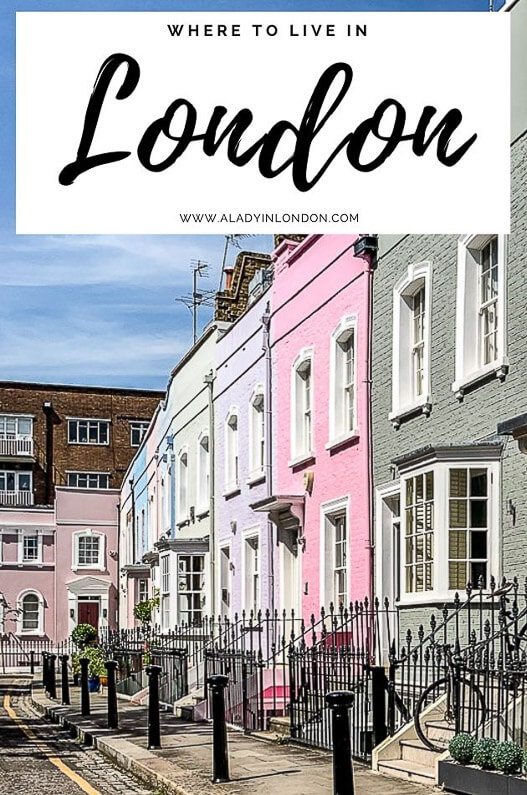
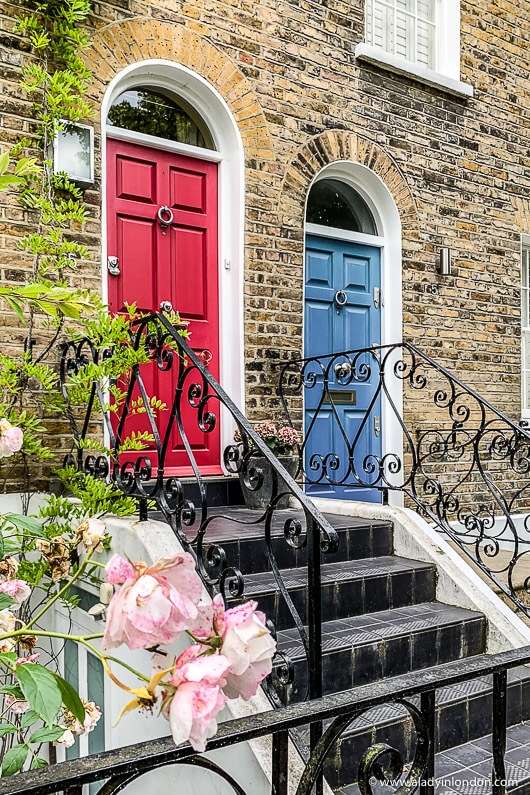
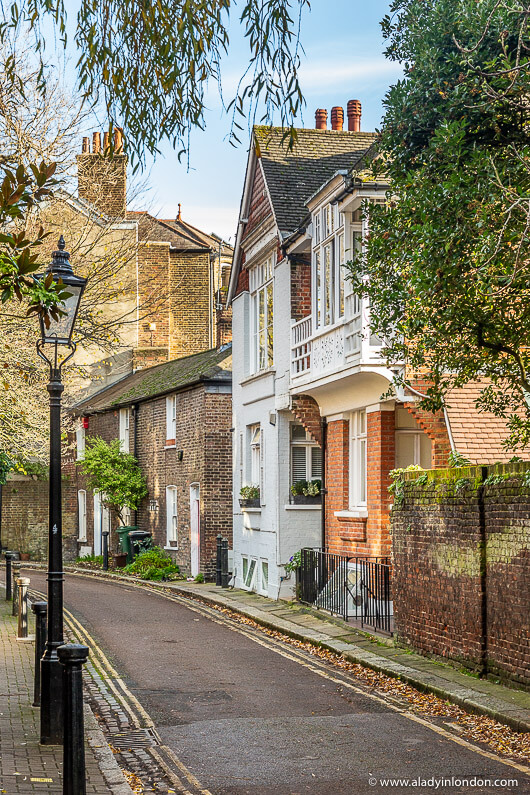

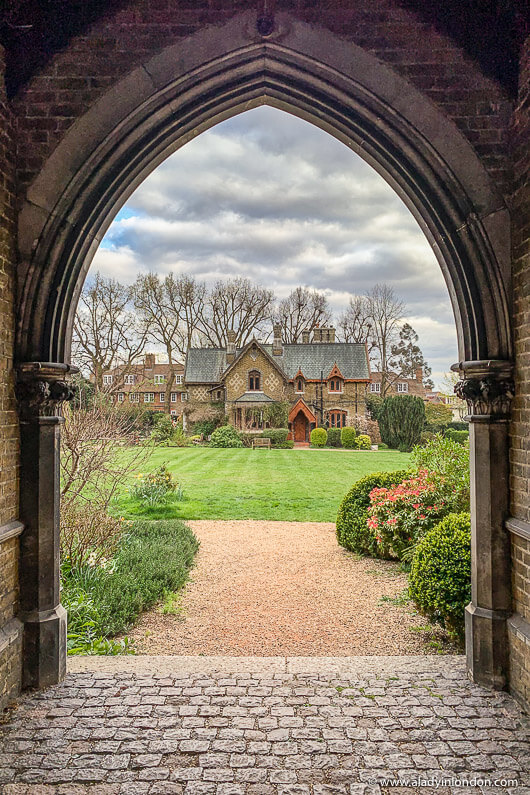
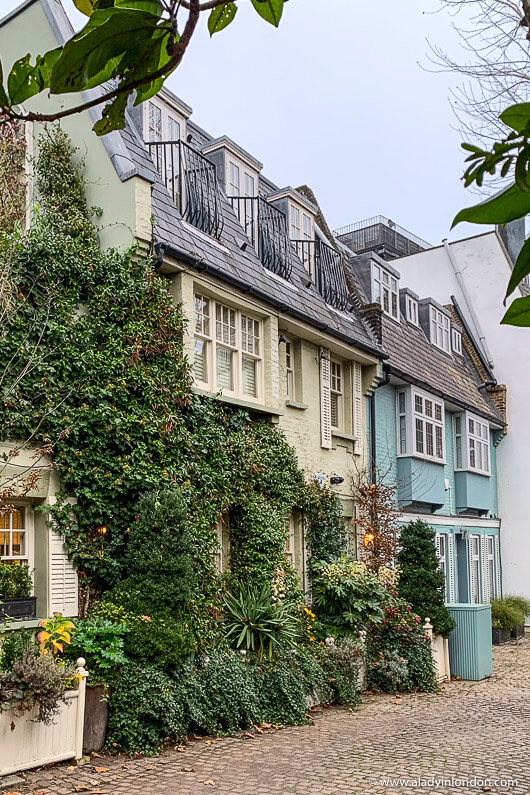
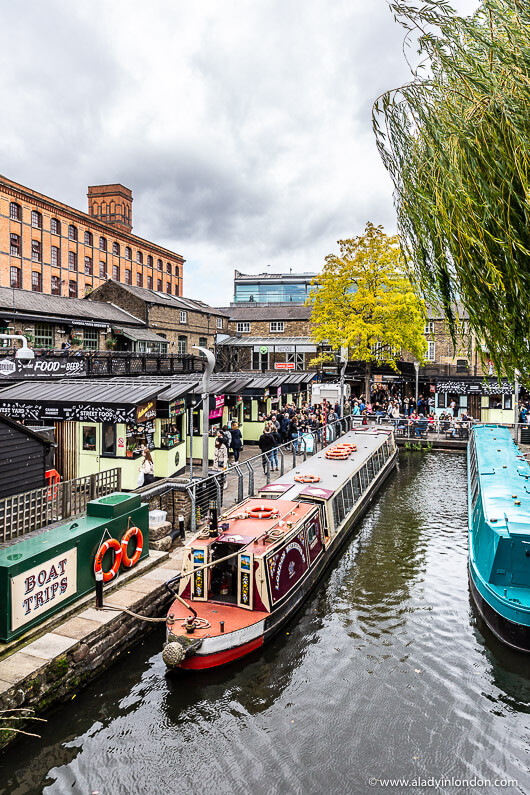

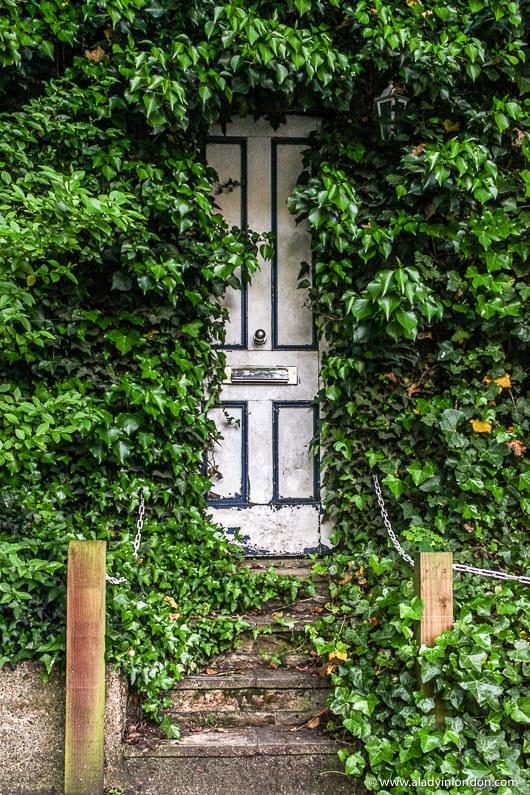
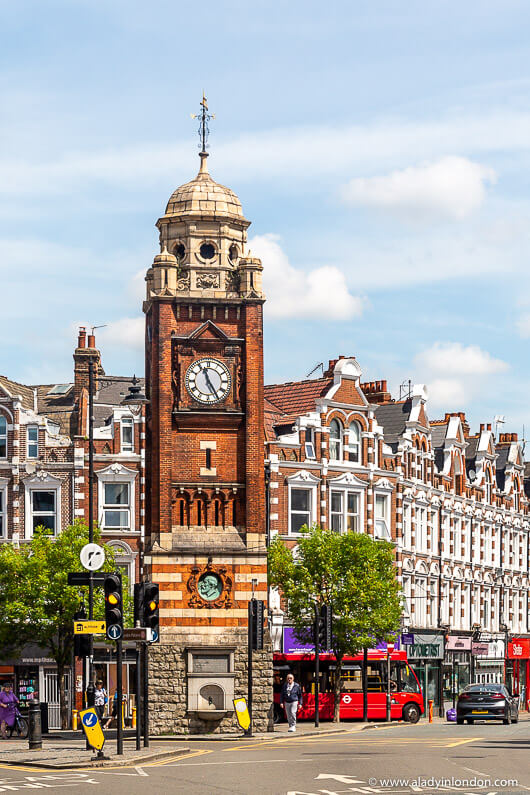
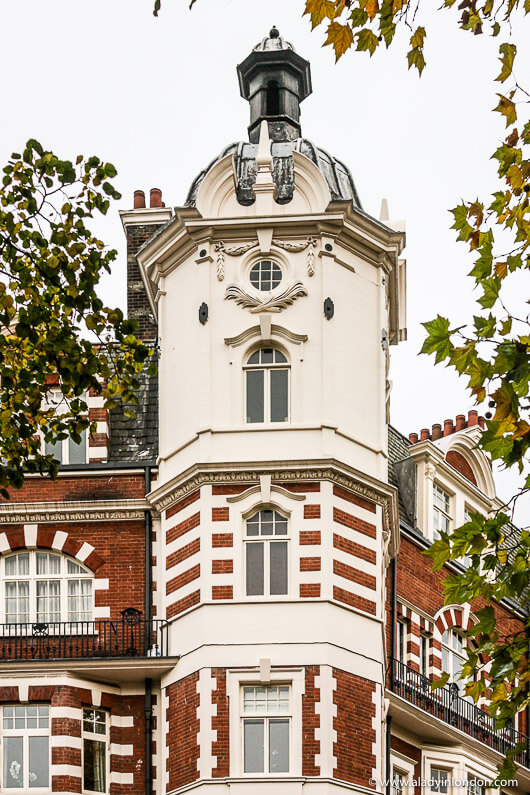
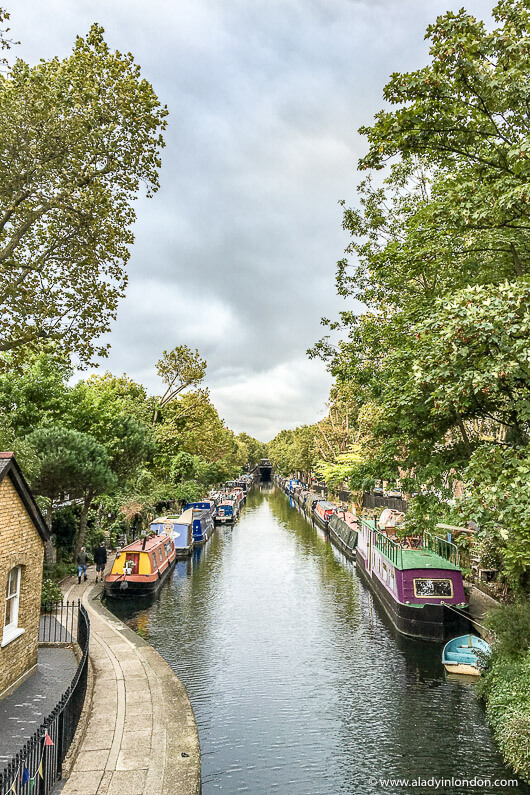









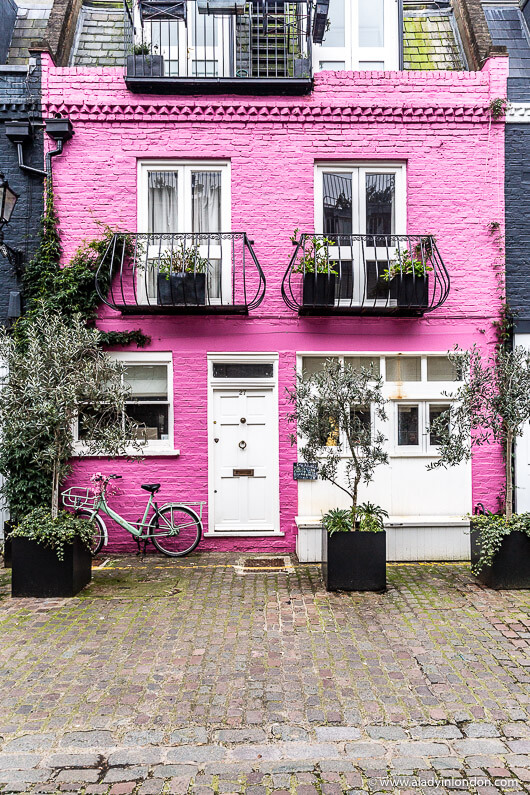

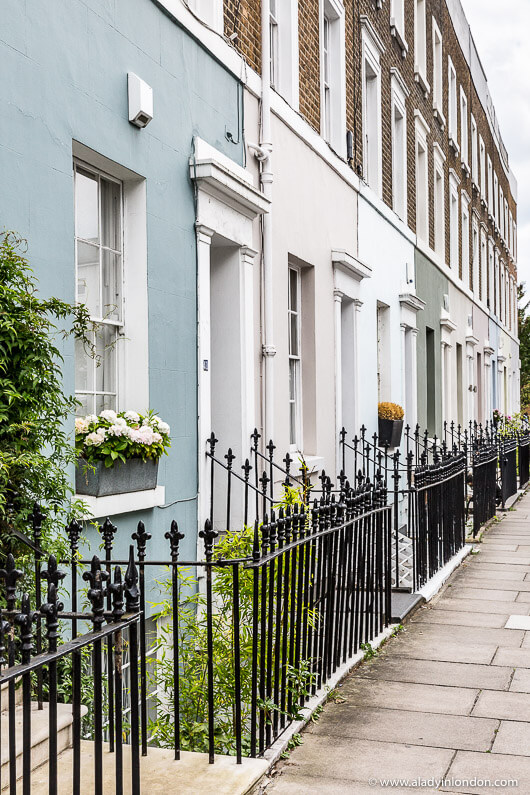



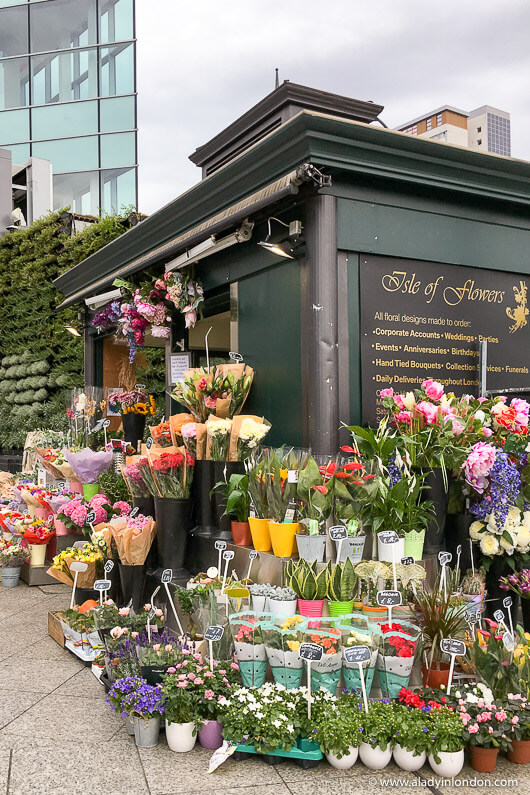

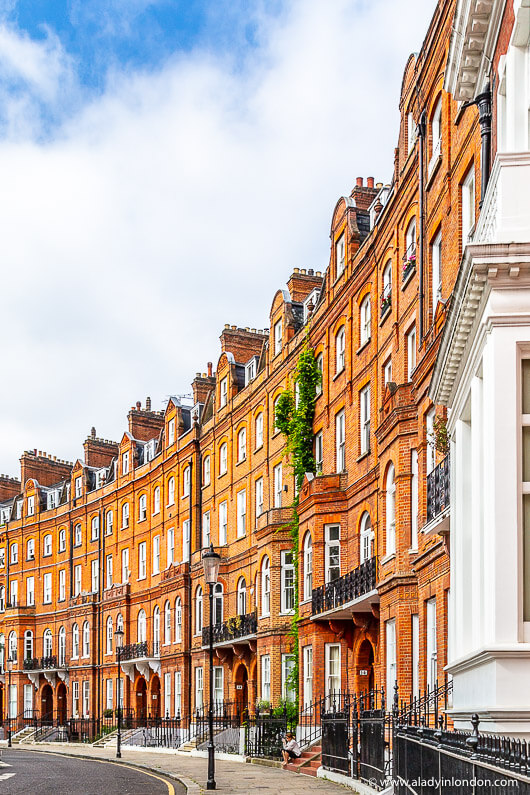
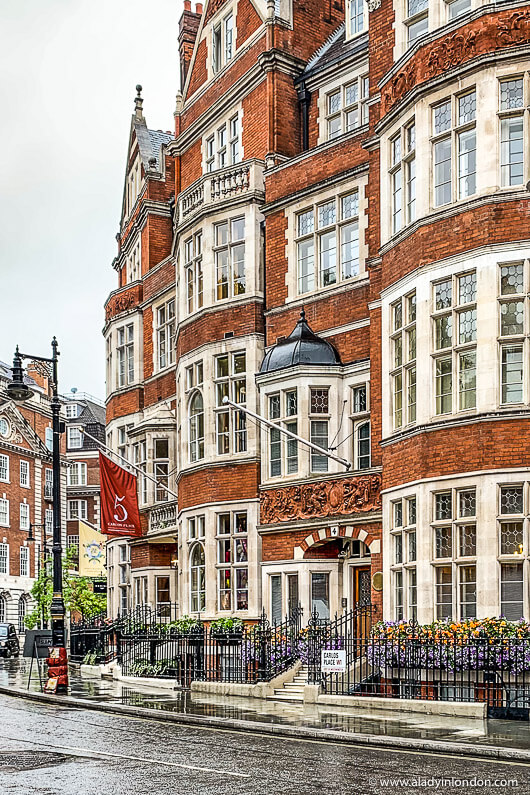

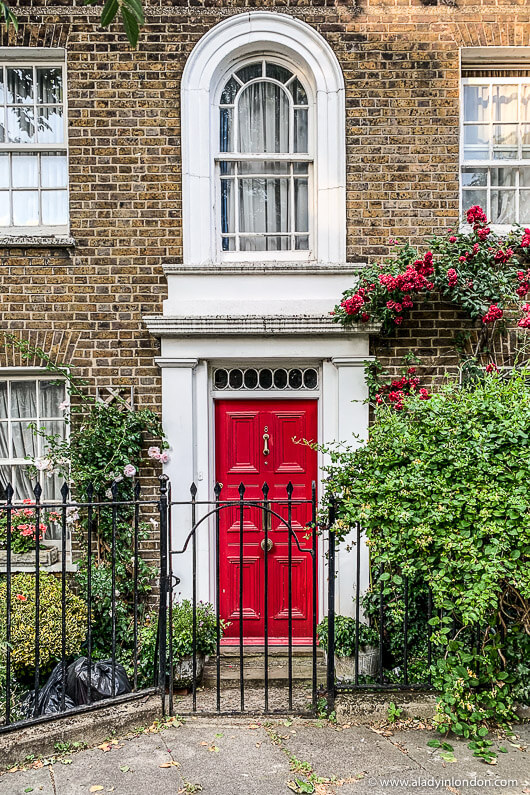
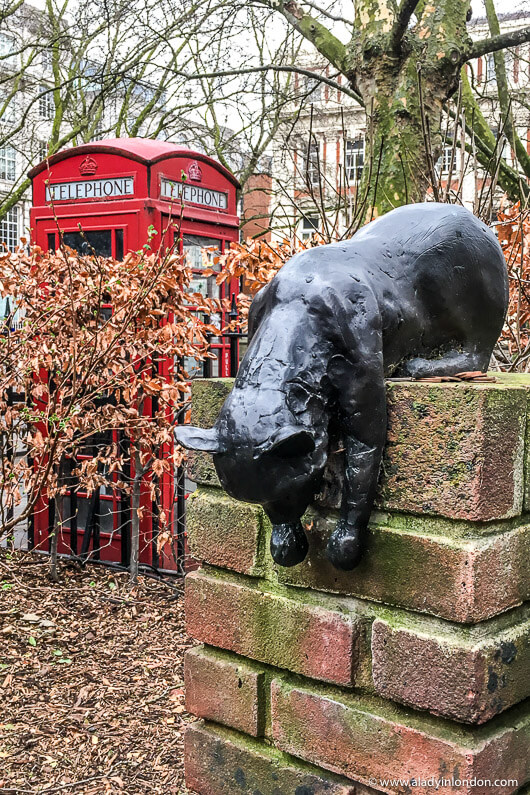
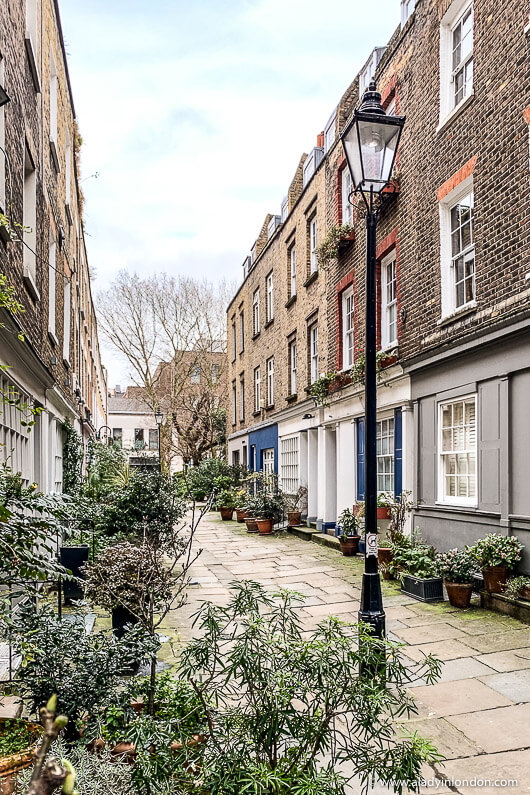
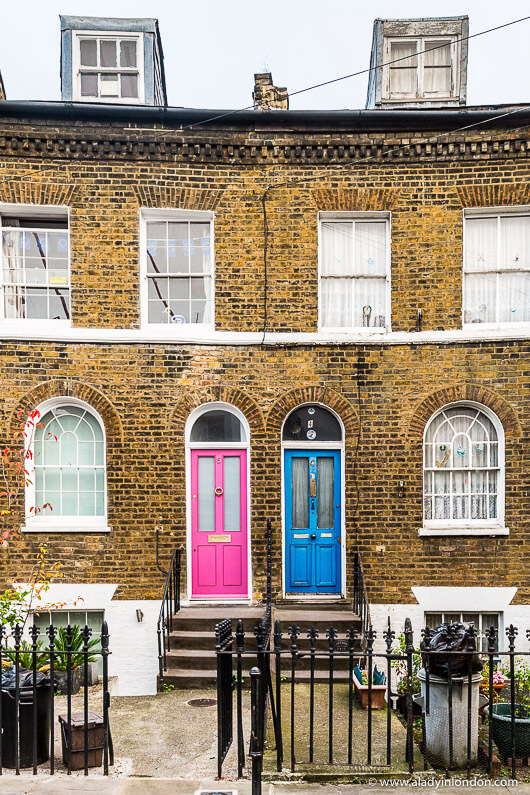



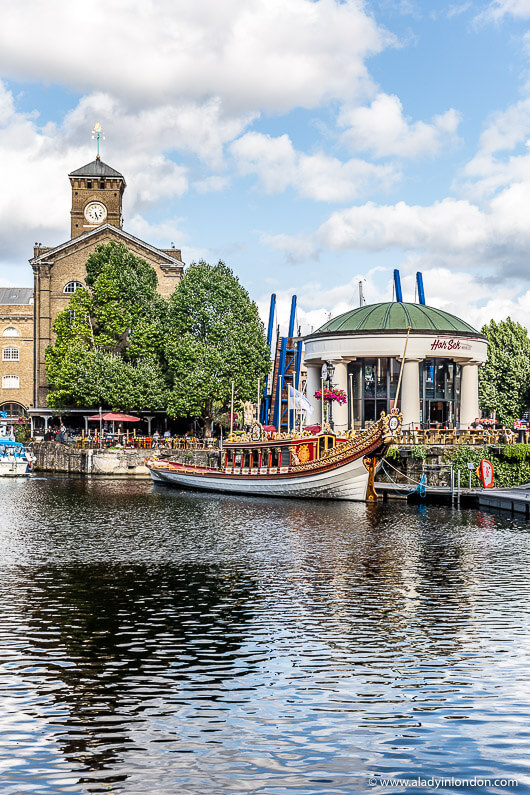
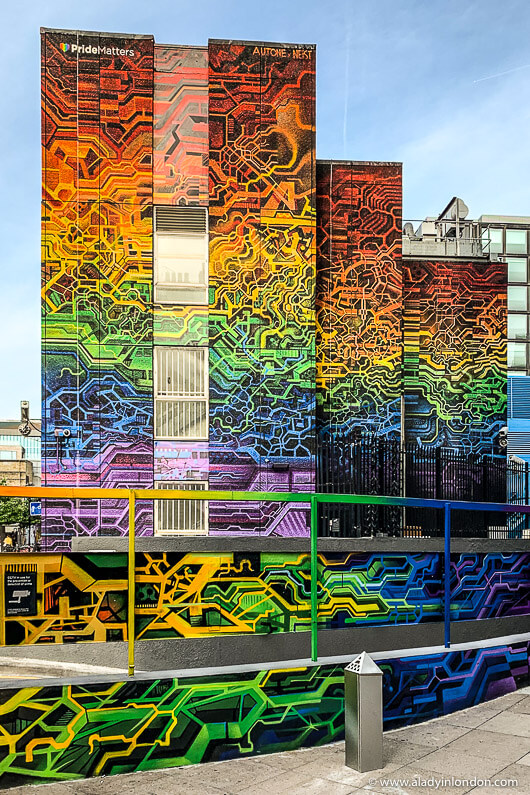



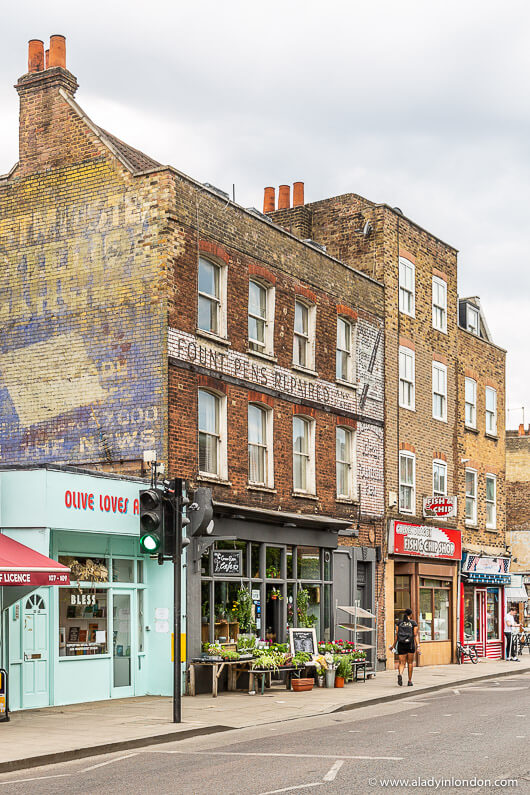

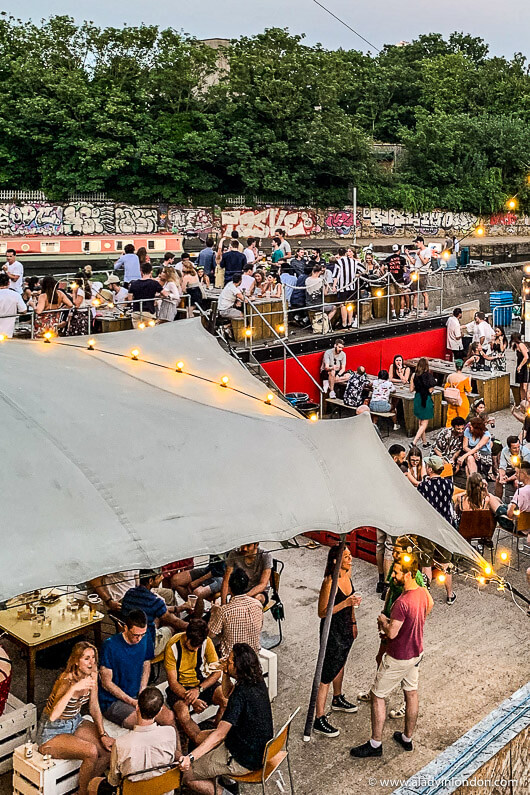
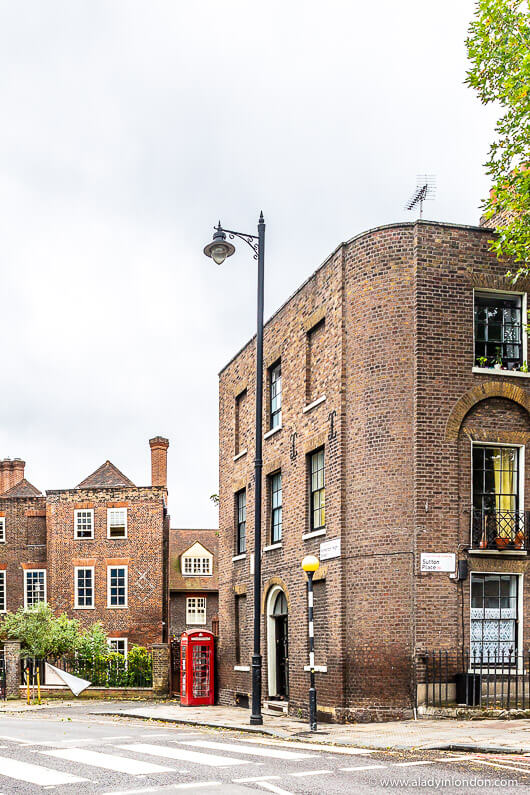


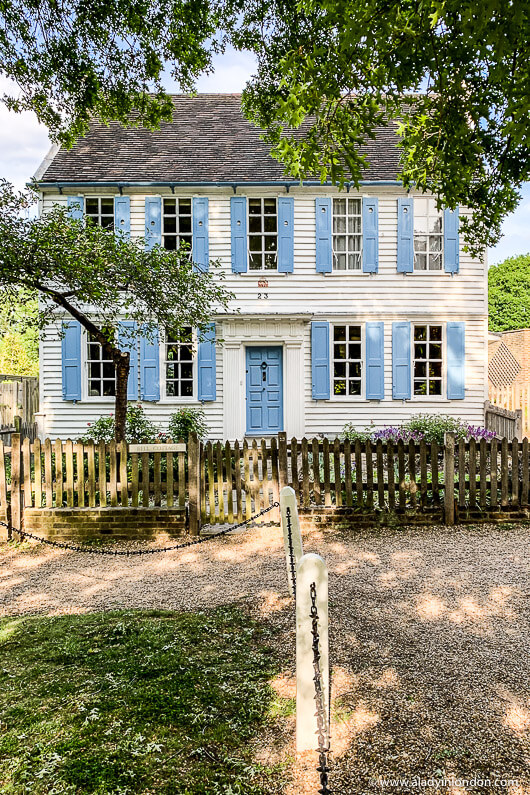

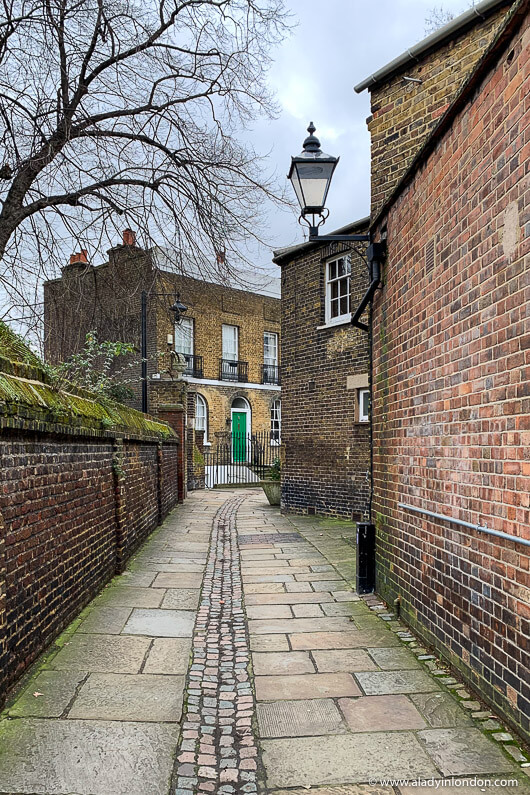

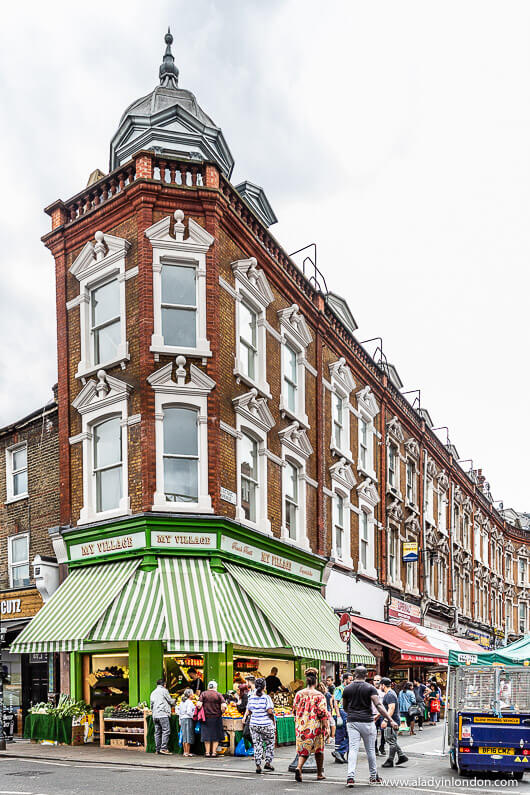

















Thanks so much for such a useful and comprehensive guide to living in London, it’s fantastic! Love it! We are off to london for 5 days shortly and will check out lots of places on your list 🙏🇬🇧
You’re welcome! I’m glad you love it.